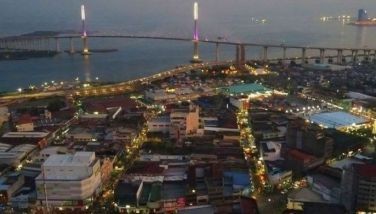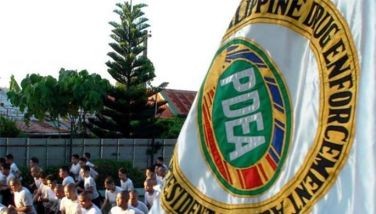(Fiesta Señor: A Gift to all Filipinos) The history behind the Feast of the Sto. Niño
CEBU, Philippines – The third Sunday of January in Cebu is the highlight of the Sinulog. Early in the morning, contingents or the different groups who will dance the Sinulog prepare for the street parade and dance showcase.
The dancers, with their attractive costumes, as well as the beat of the drums and other percussions would make bystanders and spectators dance, too, chanting “Pit Senyor!”
The atmosphere is very intoxicating but much more than the revelry is the expression of joy because it is Fiesta Señor!
But did you know that the original feast day of the Sto. Niño is the day of the discovery of the image? Let’s flashback to 1565.
As we know, the successful Spanish expedition that brought Miguel Lopez de Legazpi, the Augustinian Fray Andres de Urdaneta and their companions, was also the same group who took possession of Cebu under the Spanish Crown.
Moreover, the spiritual conquest started also on April 28, 1565 because of the discovery of the Sto. Niño image in one of the burned huts of a native Sugbuanon leader. Juan Camus, a native of Vizcaya, found in a box made out of pinewood the image of the Sto. Niño.
In the Conquistas of Fray Gaspar de San Agustin, OSA, the event of the finding was described as “miraculous.” This is so because of its providential manifestation to the Spaniards, as a confirmation to them to pursue their efforts of colonization and evangelization.
They looked at the image as a gift to them from God himself. The finding of the image was welcomed with tears of joy, expressions of piety and heart-warming resolution to observe the “Feast of the Holy Name of Jesus” on that very date of the finding.
Thus, the Feast of “Kaplag” (Cebuano word for “finding”), was the first and the most original feast of the Holy Child as decreed by Don Miguel Lopez de Legazpi.
However, successive developments were decreed in “transferring” the feast to some other “more appropriate date.” In the research of an Augustinian historian, Fr. Arnel Antonio Dizon, OSA, it is said that on 1641, the feast was set by the Prior Provincial to January 14.
This is to connect the Sto. Niño more to the Feast of the Holy Name of Jesus. The said date of the feast was set by the Church to be observed by the Augustinians along with the Franciscans and the Carmelites. But, because of the prominence of April 28 as its original feast, the devotion is still observed until the present.
However, as the devotion to the Sto. Niño spread not only in Cebu but to other islands in the country, the feast was introduced, in 1971, to the “National Calendar” of the liturgical celebrations in the Church in the Philippines.
To be celebrated every third Sunday of January, the new and present feast day is celebrated after Christmastide. Perhaps this is to unite it to the mystery of the incarnation of the Lord celebrated during Christmastide.
This decision was eventually approved by the Vatican in 1975. From then on, the Philippines is privileged to celebrate the Feast of the Sto. Niño every third Sunday of January.
The people who discovered the Sto. Niño image from a humble pinewood box considered it a gift from God.
The Holy Child was their reason for pushing on with the spiritual conquest of the country.
Now, we are given the same gift. May we celebrate this day with hope in our hearts and continue
to make the Sto.
Niño our inspiration.
Viva Pit
Senyor!
- Latest























